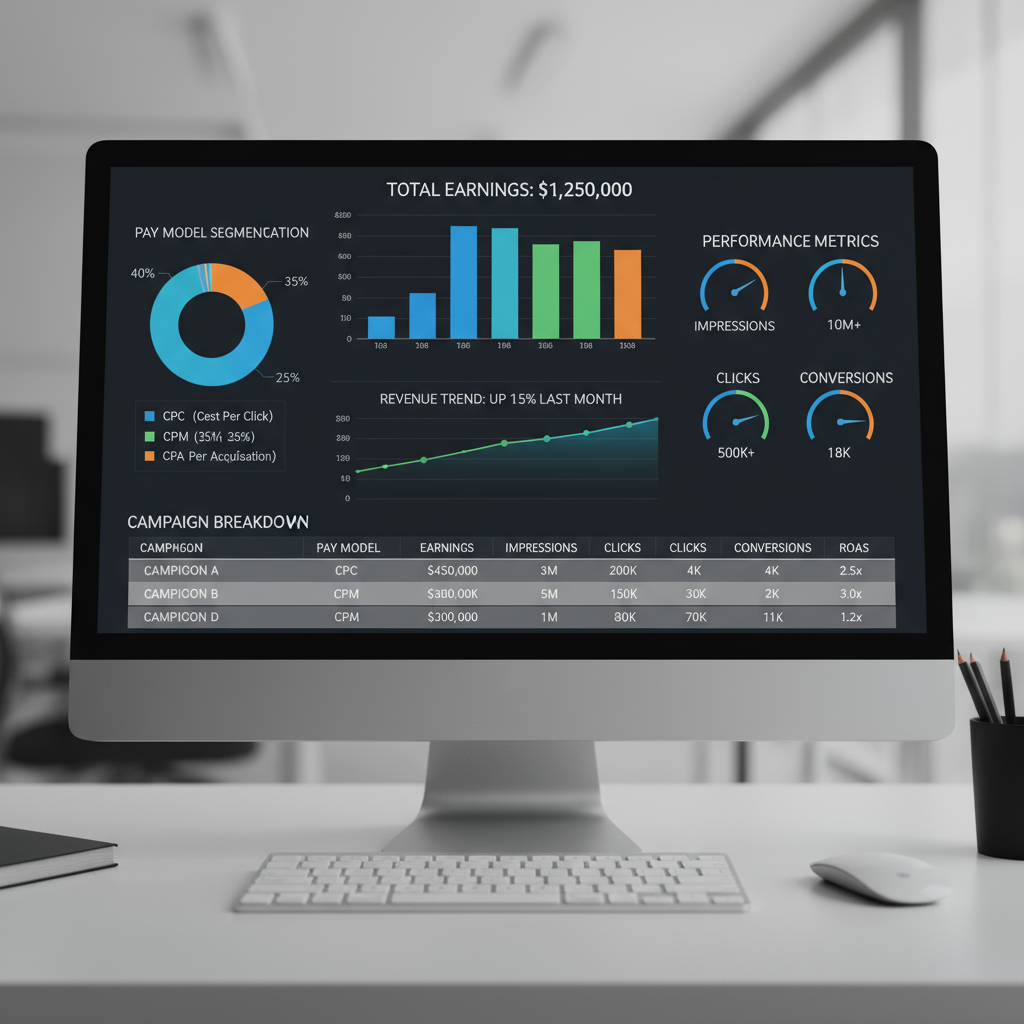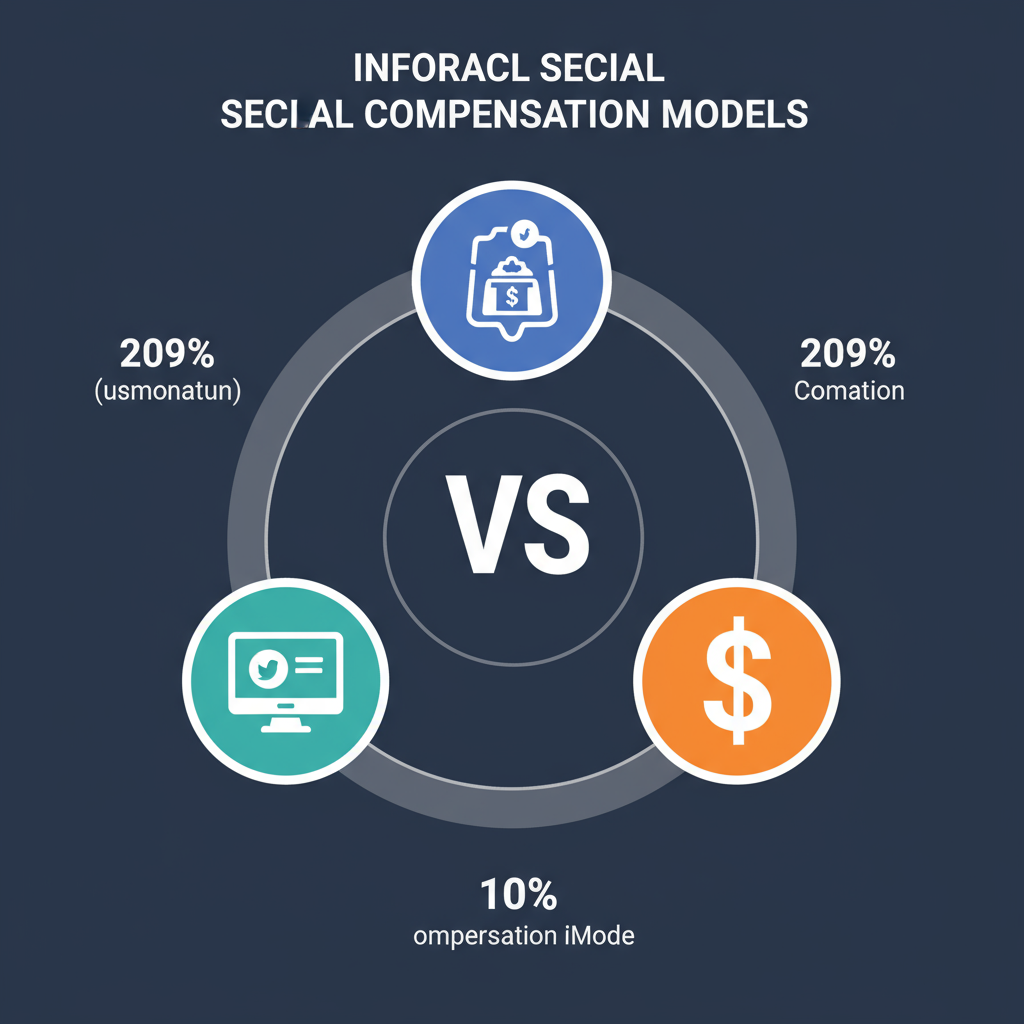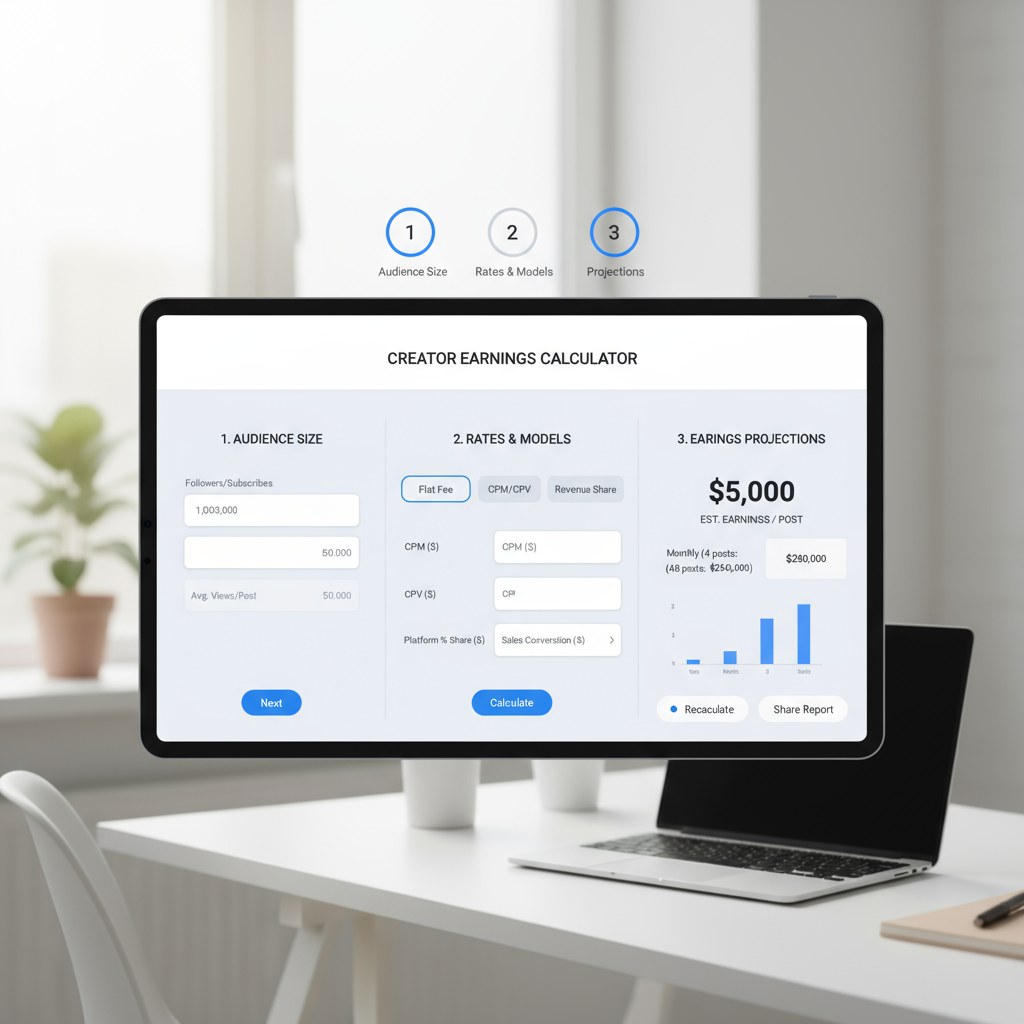Social Media Compensation Guide for Creators and Influencers
Learn about pay models, rate factors, benchmarks, and media kit tips to negotiate fair social media compensation and grow creator income.

Social Media Compensation Guide for Creators and Influencers
In the fast-growing digital creator economy, social media compensation is a core topic for influencers, creators, and social media entrepreneurs. Understanding how payment models work, what factors influence rates, and how to negotiate ensures you secure fair deals and grow sustainable revenue. Whether you’re just starting out or managing a large audience, mastering compensation strategies empowers you to protect your worth and diversify your income streams.

This guide breaks down payment models, key rate factors, benchmarks, negotiation techniques, contracts, and diversification tips to help you maximize your social media career earnings.
---
What Is Social Media Compensation?
Social media compensation refers to the financial or value exchange received by creators, influencers, and social media personalities for producing, posting, or promoting content across platforms like Instagram, TikTok, YouTube, X (Twitter), and LinkedIn.
Compensation types include direct payment, commissions, gifted products, or platform monetization earnings. Understanding the ecosystem is essential because:
- It empowers creators to negotiate effectively with brands and agencies.
- It fosters transparency and trust between creator and client.
- It supports the development of sustainable careers in the digital space.
---
Common Pay Models
Campaigns can use different pay structures depending on goals, budgets, and deliverables.
Flat Fee
A one-time payment for agreed deliverables (e.g., $500 for a single Instagram Reel). Straightforward but requires clearly defined scope.
Hourly Rate
Payment based on time worked, often suited to freelance social media managers or ongoing projects.
CPM (Cost per Mille)
A rate per 1,000 impressions—ideal for reach-driven campaigns on Instagram Stories or YouTube ads.
CPC (Cost per Click)
Payment per click generated—effective for affiliate-style, conversion-driven promotions.
Commission-Based
Percentage of sales generated via unique tracking links or codes—common in affiliate partnerships.
Gifted Collaborations
Non-cash compensation via free products or services—can be strategic for newcomers but should be weighed against time investment.
---
Factors Influencing Rates
Your rate depends on both measurable and intangible metrics:
- Follower Count – Larger audiences command higher fees.
- Engagement Rate – Likes, comments, and shares demonstrate active influence quality.
- Niche – Specialized niches (luxury beauty, fintech, travel) often secure premium rates.
- Content Type – Short-form vs. long-form video, carousel posts, graphics—all have different production costs.
- Platform Performance – TikTok’s viral reach differs from YouTube’s evergreen monetization model.

---
Industry Benchmarks and Rate Calculators
Tracking market averages helps you stay competitive. You can:
- Review annual Influencer Marketing Hub surveys and reports.
- Use calculators like Social Bluebook or Collabstr.
- Join creator communities to exchange insights and rate data.
Example benchmark ranges for Instagram posts:
| Follower Range | Average Rate per Post |
|---|---|
| 1k-10k | $50 - $150 |
| 10k-50k | $150 - $500 |
| 50k-200k | $500 - $2,000 |
| 200k+ | $2,000+ |
---
Creating a Media Kit
Your media kit serves as a professional snapshot for brands. Include:
- Portfolio – Highlight best-performing and visually diverse work.
- Analytics – Provide screenshots detailing audience demographics and engagement.
- Rate Card – Clearly outline deliverables and pricing.
Tips to refine your kit:
- Design with Canva or similar tools.
- Update quarterly to reflect growth and new services.
- Add testimonials from satisfied clients.
---
Negotiating Best Practices
Strong negotiation secures better deals without underselling your value.
- Highlight ROI – Present analytics proving results.
- Define Deliverables – Be specific about quantity, format, and deadlines.
- Set Usage Rights – Charge for extended usage beyond organic social posts.
- Apply Exclusivity Fees – Ensure you’re compensated for restrictions on collaborating with competing brands.
Example negotiation script:
Hello [Brand],
Based on your requirements for [Deliverables], my proposed package includes:
- Content creation and posting as agreed
- Full analytics report
- 6-month usage rights
The total fee for this package is [$XXXX].
Best regards,
[Your Name]---
Understanding Contracts and Key Terms
Before signing, always analyze contracts for:
- Payment Schedule – Net 30, upfront, or milestone payments.
- Cancellation Terms – Fees or minimum notice periods.
- Content Ownership – Define who holds rights to produced content.
- Exclusivity Clauses – Ensure terms are limited and fairly compensated.
Protect yourself with written and signed agreements—avoid relying solely on verbal commitments.
---
Diversifying Income Streams
Avoid relying solely on brand partnerships—combine different revenue channels:
- Affiliate Links – Earn commissions via tracked referrals.
- Platform Monetization – Use YouTube AdSense, TikTok Creator Fund, Instagram bonuses.
- Products/Services – Develop merchandise, courses, or e-books.
- Paid Subscriptions – Offer exclusive content via Patreon or similar services.
Diversification creates stability even when campaign work fluctuates.
---
Red Flags and Underpayment Traps
Be alert for:
- Unclear Deliverables – Leads to unpaid extra work.
- Exposure-Only Offers – Rarely replace tangible pay.
- No Written Agreement – Puts you at legal risk.
- Rates Below Market – Know and protect your value.
Trust your instincts—politely decline questionable offers.
---
Tracking Earnings and Invoicing Professionally
Professional accounting boosts credibility and simplifies tax prep.
Key steps:
- Track income via spreadsheets or tools like QuickBooks, FreshBooks, or Wave.
- Include service specifics, dates, and payment terms on invoices.
- Monitor receivables to quickly address late payments.
Example invoice table:
| Invoice # | Date | Description | Amount |
|---|---|---|---|
| 0001 | 2024-06-15 | Instagram post - Brand X | $750 |
| 0002 | 2024-06-20 | TikTok promotion - Brand Y | $1,200 |

---
Final Thoughts
Mastering social media compensation requires both creativity and business savvy. By understanding pay models, tracking benchmarks, building a polished media kit, negotiating confidently, and diversifying income, creators can achieve lasting financial stability.
Whether you’re a micro-influencer seeking growth or a seasoned content creator scaling your operations, remember—knowledge, preparation, and clear communication are your strongest assets in this competitive landscape.
Ready to start earning what you deserve? Build your media kit today, track your rates, and connect with brands that value your influence.




